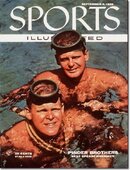OP
ballastbelly
Contributor
... i went snorkling again and did catch my self many times subconsciously gripping the mouth piece with my teeth.
i found that unless snorkling against a strong current, you dont need to use your teeth at all. your lips can adequately hold the snorkel.
i didnt realize the 100000gr jaw force mentioned above made bouyancy insignificant in comparison. i had initially thought bouyancy was the issue because it was the left top teeth which bugged me.
my next idea is to rip out the teeth grips,this is not a scuba regulator to be used at depth, the risk of a snorkel falling out while snorkling at the surface although unpleasant, is quite acceptable
one simple idea that i found which worked for me was to swap snorkel from left to right side of my head on the way back to the dive exit. that halves the discomfort on each set of teeth.
i found that unless snorkling against a strong current, you dont need to use your teeth at all. your lips can adequately hold the snorkel.
i didnt realize the 100000gr jaw force mentioned above made bouyancy insignificant in comparison. i had initially thought bouyancy was the issue because it was the left top teeth which bugged me.
my next idea is to rip out the teeth grips,this is not a scuba regulator to be used at depth, the risk of a snorkel falling out while snorkling at the surface although unpleasant, is quite acceptable
one simple idea that i found which worked for me was to swap snorkel from left to right side of my head on the way back to the dive exit. that halves the discomfort on each set of teeth.




